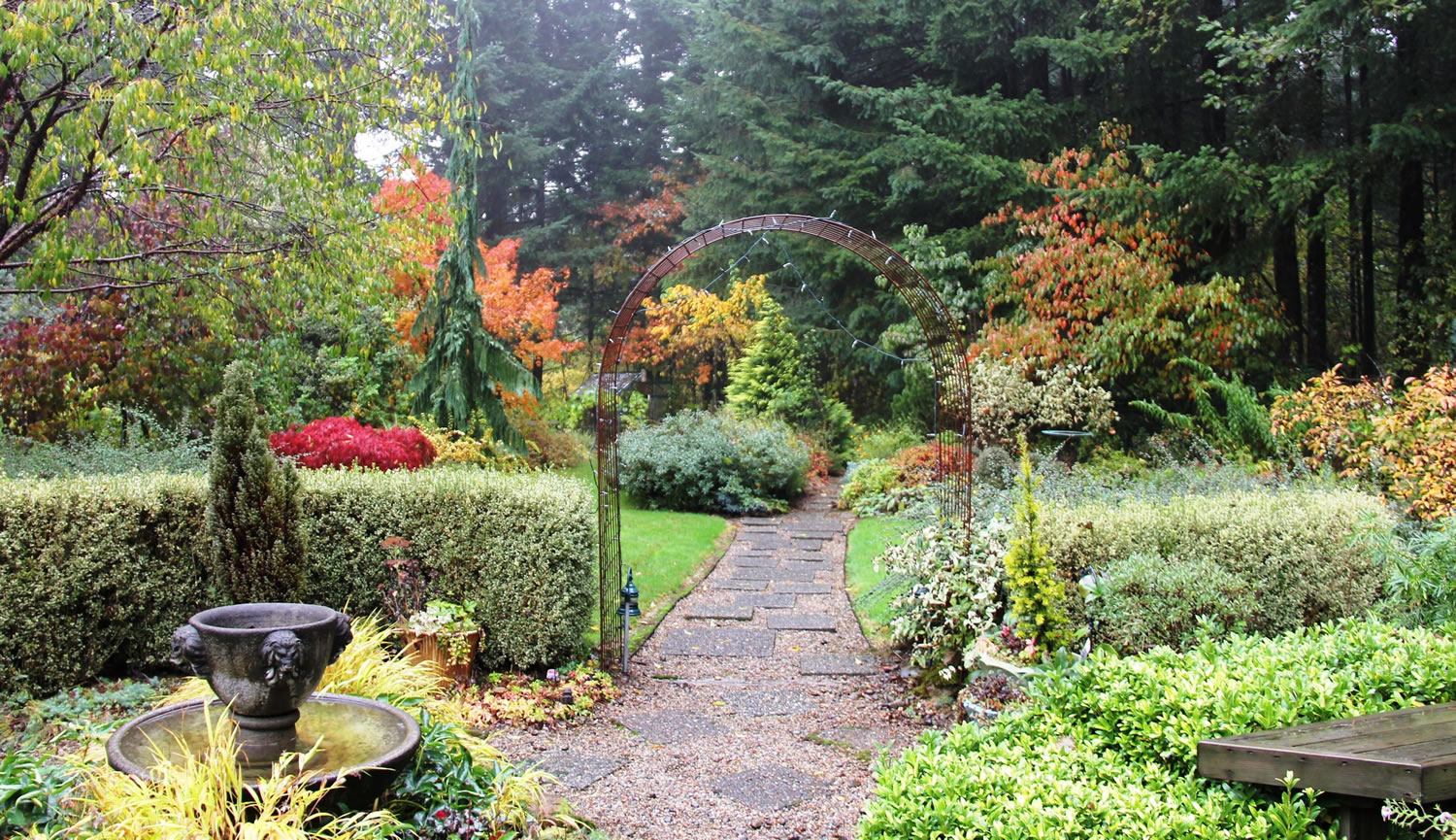Mid- to late autumn is one of the most beautiful times of year in the Northwest garden. Summer is a thing of the past. Winter is just around the corner and yet the late fall garden is awash with a kaleidoscope of plant interest. Fruit, bloom, bark and foliage hold sway until the bite of winter cold takes hold. While other cities turn ashen gray with the onset of cold weather, we begin to take on deeper color hues. The Northwest lawn turns a lush, deep green in gratitude for the autumn rains.
Many of us take a modest approach to putting our gardens to bed for the winter. I have roses blooming near the front door and on clear days sunlight reflects off the faces of winter pansies. But we are well into the season and despite any life still left in the garden, we need to take care of certain jobs before first frost. By now, all tender plants should be protected. This includes plants that are marginally hardy. Tuck tender perennials into their garden beds with a light layer of mulch.
Many of the fuchsias, seasonal pelargoniums, hebes and jasmine plants will be killed by frost if left in the garden. If not killed outright, they will succumb to a series of freezes and thaws that can accompany our Washington winters. Unless you specifically bought a variety of plants for their hardiness in our zonal area, they need to be overwintered in a frost-proof area. While you’re at it, bring in all delicate ornamental pots and seasonal decorations.
A cold frame, garage or perhaps the no man’s land on the side of your home will do nicely. Utilize the area between the house and fence or wall that is often ignored for its landscape potential. Unless you intend to bring a designer in to help you bring this area to life, revamp it as a year round work place. Once you do so, this can become one of the most useful spaces in your garden. Use it as a place to protect small potted plants as well as ceramic or clay garden ornaments.
The point of winter protection of plants is to keep them in a state of dormancy through the winter without freezing the roots or allowing the soil to heave around the roots. Check these plants periodically for water. They should be moist but well drained. This applies to perennials, needle-leaved evergreens, broad-leaved evergreens and plants that were put out in the garden this fall. A last addition of organic mulch will help hold moisture in the ground for the benefit of new plants.
Certain shrubs may also test the bounds of hardiness. Sometimes, all they need is a sheltered position where they are safe from freezing winter winds. Shrubs such as tall slender yew and arborvitae need to be wrapped lightly with a thin wire or heavy twine so that heavy rains and unexpected snowfall do not split the plant apart. It’s possible that even one light snowfall will ruin the ultimate shape of a beautiful, healthy plant.
For cold protection, take advantage of leaves and small evergreen branches that have come down in the fall winds and use them to cover areas of tender plants. You can also use small evergreen boughs, standing on end, to protect taller shrubs such as hydrangeas. Evergreen branches are also a good protection from chilling wind. These are chores that few gardeners do and many wish they had done.
Finish your garden cleanup and weeding on days when weather permits. Some gardeners will settle for nothing but a perfectly antiseptic garden going into winter. For others, cutting back straggly branches and raking up any yard debris are enough. I like to leave seed heads on most plants in the flower border to encourage birds to stay and forage through winter. Wildlife enthusiasts will want to include shrubs and trees with winter berries such as holly, viburnum and Serviceberry.
On many fall and winter mornings we watch celebrity weather persons in New York City slap cut out clouds and freezing rain placards on the upper left hand corner of U. S. weather maps despite the varied weather patterns of our region. Our friendly, local meteorologists are more seasonally correct but often disturbingly off base about our daily weather. May I suggest that before you take anyone else’s word for it, you step outside and see for yourself? If it’s nice, do a bit of late autumn gardening.
Robb Rosser is a WSU-certified master gardener. Reach him at Write2Robb@aol.com.



